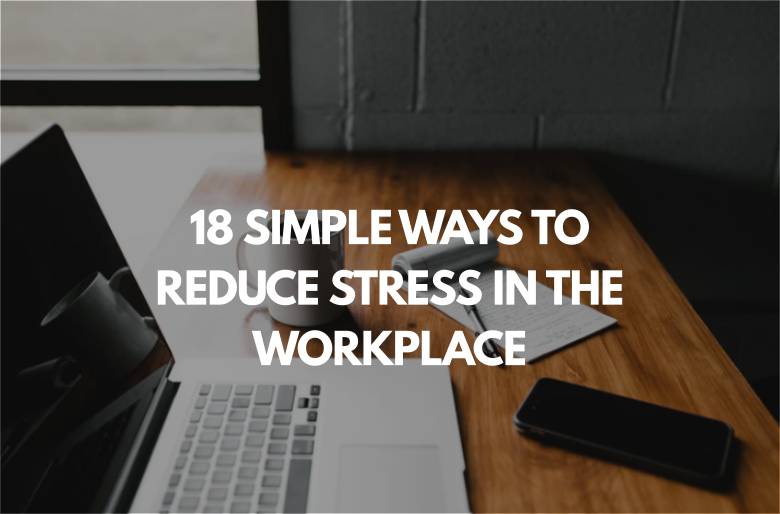
Stress management at workplace is getting to be buzz word in corporate circles. A survey indicated that workplace stress costs the nation close to $300 billion each year in terms of health care, work absenteeism and rehabilitation. The management can no longer brush aside the ever increasing concern of stress management in workplace because it has become clear that mismanagement of this problem cuts deeply into profits and productivity.
Managers, now more than ever, are trying to find new ways for managing employee morale and stress. Stress management programs at work place, conducted by external consultancies or internal execs, are quite popular these days but the question remains – are they really effective at curbing the problem?
The depressing state of economy and employee stress are directly proportional in their relationship. How does a manager motivate his employees to be productive and efficient, while keeping their stress levels in control, especially when increased monetary benefits and compensation is not a viable option?
This article serves to provide a few simple yet effective strategies that you can implement as a manager for reducing stress at workplace.
18 Ways to Reduce Stress At the Workplace
1. Be empathic toward your employees
Respect individual personality traits and quirks. No single human is the same as the other; the richness that comes up in any team is because of this difference, learn to appreciate it.
Work optimally with what you have instead of trying to mold the employee according to your standards. You will find introverts, extroverts, optimistic as well as pessimistic employees in your team, don’t favor or alienate anyone for their personality traits.
Get to know each employee personally and interact with them at a level which is comfortable for them.
2. Install booths for anonymous complaints and feedbacks
There is no better way to secure the trust of employees, and reduce employee stress, than to allow them to voice their feedback and complaints. Use the feedback to identify issues in the workplace that need fixing.
Conduct personal (one on one) meeting with employees to address their concerns. Don’t take any negative feedback personally; try to address it in the best way possible.
Sometimes a word of encouragement or hope can assuage the deepest fears in any employee.
“One of the most beautiful gifts in the world is the gift of encouragement. When someone encourages you, that person helps you over a threshold you might otherwise never have crossed on your own.” – John O’Donohue
3. Provide healthy food in the canteens

Small things go a long way in creating a happy and stress free work environment. Most employees like to unwind and relax during the lunch breaks, so the canteen should be a stress free place and food should be healthy.
A noisy crowded canteen which supplies limpid food can offset the most optimistic of employees.
4. Hold monthly one to one interactions
Meet each employee personally and closely listen to what they have to say. Ask yourself if you are really empathizing with the employee’s concern or are you trying to defend your point of view?
These meetings should be forums for the employees to come out with their concerns and suggestions for work place improvements. They should feel confident that you are willing to give them a fair and unprejudiced hearing.
5. Offer small incentives in terms of money and paid leaves
Small incentives can go a long way in encouraging better productivity among your employees.
Small bonuses for achieving deadlines and paid leaves can make the employees feel appreciated and encouraged.
6. Address performance fear among employees
Some top performing employees tend to slack-off after a while because they feel out of place among the rest of their colleagues. Top performers need to be encouraged privately so that they don’t feel discomforted among other colleagues.
A low performing employee should be dealt with even more carefully, the reasons for their slack need to be addressed with alacrity – may be the work they are doing is not challenging enough or may be there is a lack of guidance on your part.
7. Help employees manage time effectively
Clear guidance and deadlines help the employees organize their work more effectively. Blurred instructions can cause employee stress through confusion or lack of direction.
Emphasize the need for punctuality and time management but also encourage them to wind up their work by a definite closing time. Spending extra hours in the office becomes a habit with certain employees and this actually eats into their productivity in the long run.
8. Allow for flexi work timings
Flexibility promotes relaxation while rigidity breeds stress. Think of ways to introduce flexibility in your work timings. If possible, allow employees to come to work as per their convenience.
Focus on projects completed rather than hours worked. If an employee completes a project quicker, allow them free time (or to go home early) instead of piling them up with more projects.
9. Allow an option to work from home

If possible in your line of work, allow employees the option to work from home and to come to the office only when required.
Various surveys indicate that allowing employees to work from home can significantly increase their productivity. For instance, this survey by a California based company has shown a 47% increase in worker productivity when allowed to work from home!
10. Place stress relieving toys in cubicles
To add a dash of sporty feeling to the office you can place a few stress toys at employee cubes. Sand timers, pin arts, stress balls and jigsaw puzzles can add some fun to bland cubes and act as stress relievers for the employees.
11. Allow for natural lighting
The paint and lighting used in the office can also affect employee moods and stress. Whenever possible, allow for natural sunlight to enter the office premises. There is plenty of research to prove that daylight exposure significantly reduces employee stress while increasing employee productivity.
You can also consider providing personalized lighting which the employee can adjust as per their requirement.
12. Place plants in and around office cubicles

There is nothing like a dash of nature to liven up sagging spirits. Thick green foliage and flowering plants create a soothing environment in the office and improve the employee feel good factor.
13. Ensure a less noisy environment in the office
Silence is the antidote for stress and noise the perpetrator. Talk to your employees and ask them to keep the noise level as minimal as possible, especially while they are on phones. Make the office sound proof by lining the cubes and walls with sound absorbing materials and fabric.
14. Ensure clean washrooms and pantries
A leaking bathroom faucet or urinal can offset the best of moods. Make sure your employ enough cleaning staff to keep the washrooms and pantries in a sanitary and spotless condition.
15. Delegate work efficiently
Allow for proper work delegation to avoid over burdening of some employees. There are times when certain employees are over worked while others have plenty of leisure time – bad delegation is the culprit. Keep tab of the work being done by the employees and ensure judicious work circulation.
16. Avoid forcing employees to attend extra-curricular activities
Respect individuality among your employees. Some of your team members will prefer solitude to gatherings; restrain yourself from forcing them to attend get-togethers and outings.
Allow plenty of space for the employees to express their individuality instead of expecting them to always behave with a group mind-set. Some managers encourage open dress codes for this very reason.
17. Encourage employees to add a personal touch to their cubicles
Some employees feel more at home when they add a few personal touches to their work stations. Posters, framed photos, toys and other personal stationeries can add a touch of individuality to their work environment and help them feel less stressed.
18. Make the work environment spacious
Spacious work environments are less prone to stress. Make sure the cubes are not too cramped and some personal space is available to each employee.
19. Give employees assurances that they will not be laid off
The greatest source of employee stress is job security so you should try your best to assuage this fear.
Sometimes hard decisions need to be taken but the way you communicate these decisions to the team would go a long way in assuring them and keeping them less stressed.
20. Avoid unnecessary meetings
There is plenty of research to prove that too many meetings stifle productivity and morale while increasing stress levels. Whenever possible, cut down on meetings that are not absolutely necessary. You can also consider conducting remote meetings instead of asking everyone to be physically present in a meeting room.
21. Avoid micro managing things
Allow your employees the freedom to work autonomously. Too much control is bad as no one likes the feeling of being controlled. As mentioned earlier, flexibility is the key.
So these were 21 simple steps you can implement today that will significantly reduce employee stress. What strategies worked for you? Let us know in the comments below.


